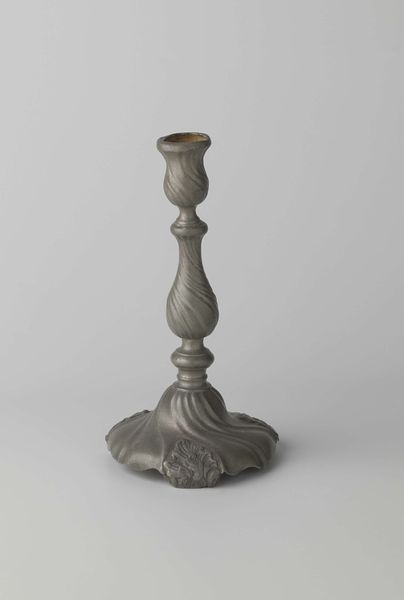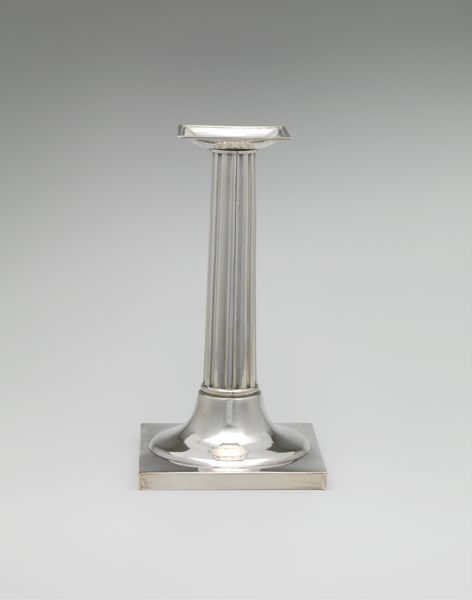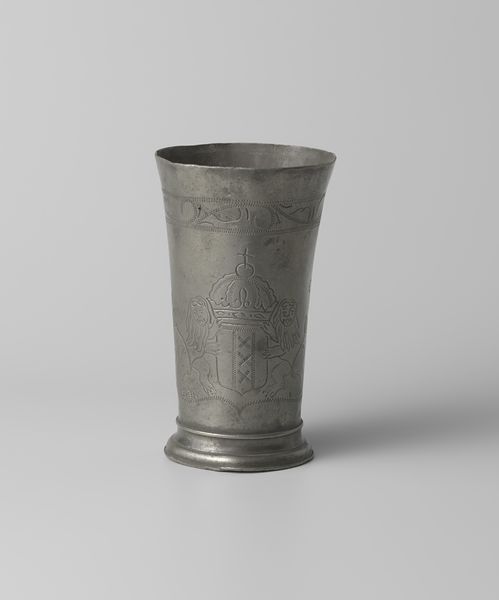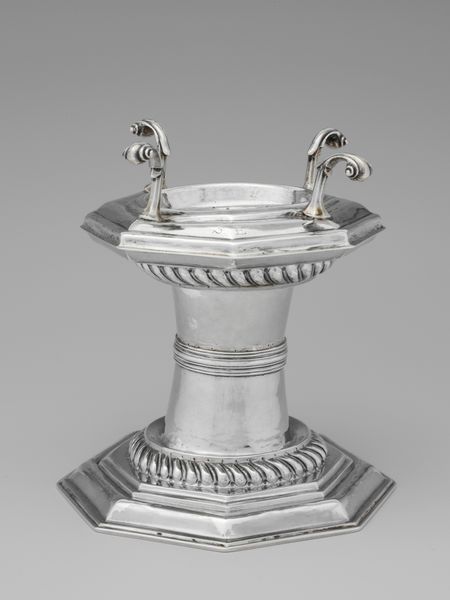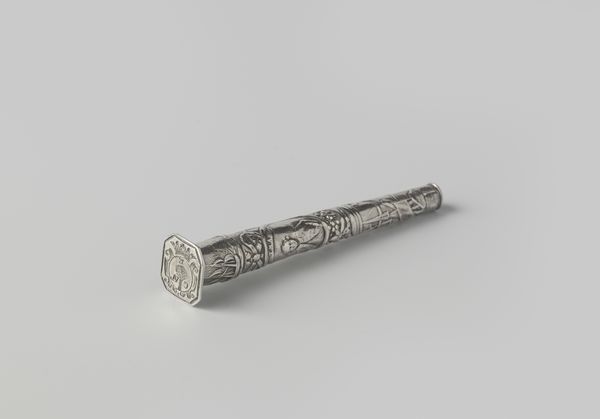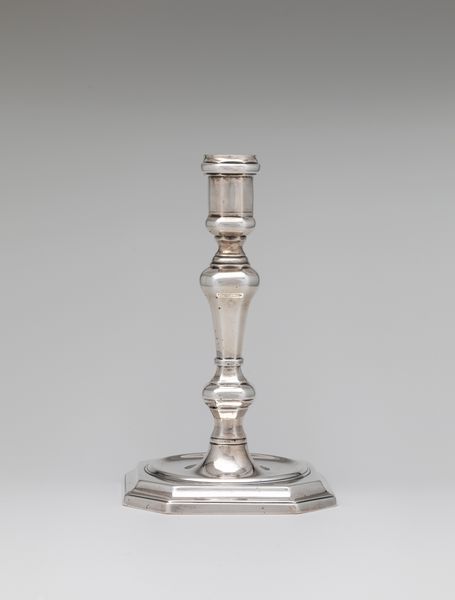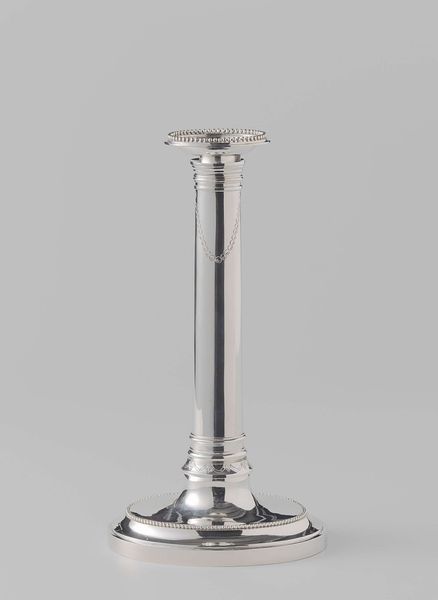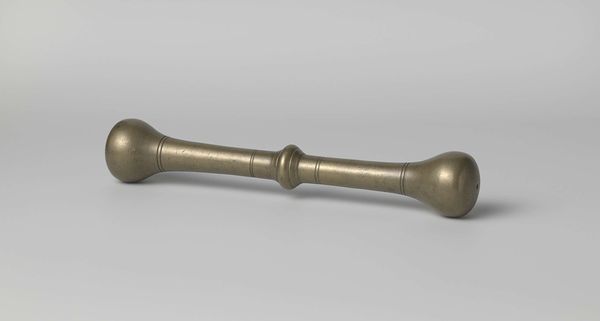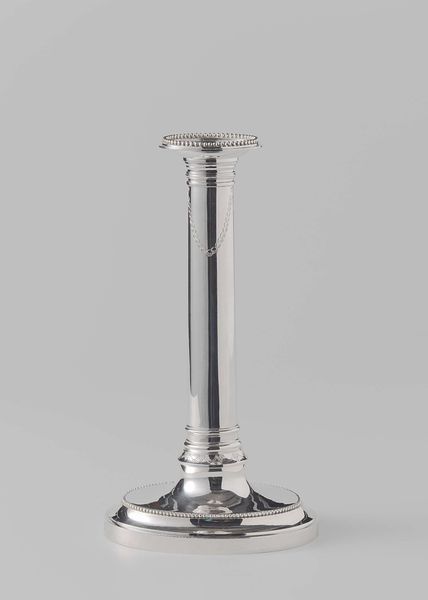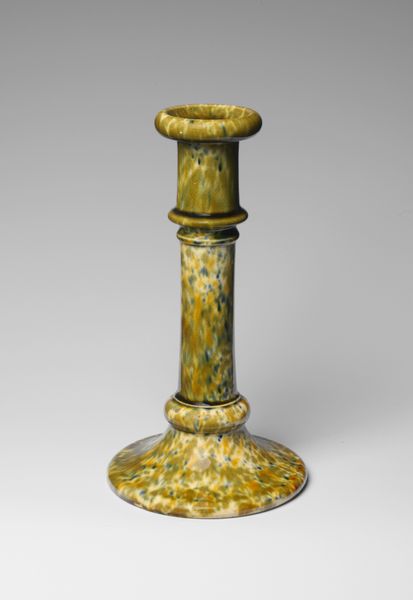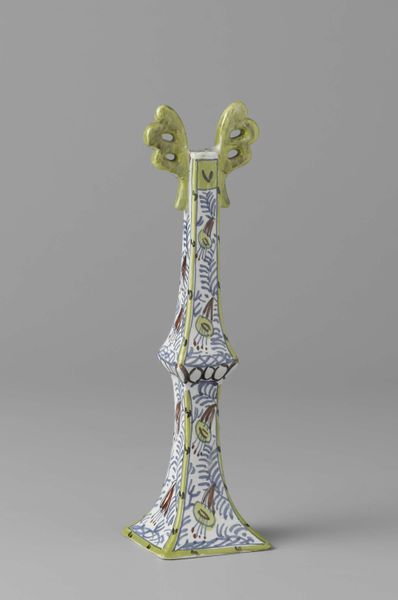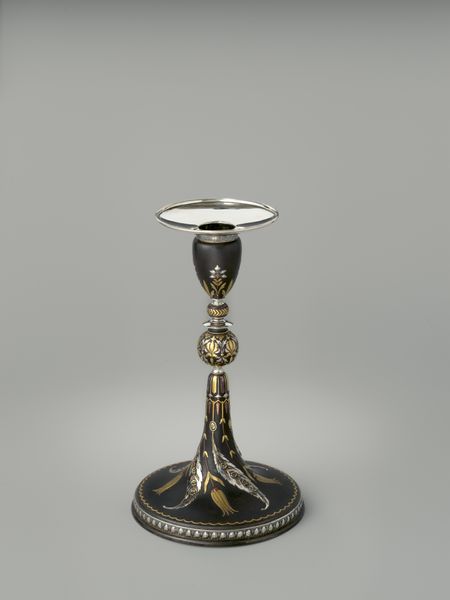
Dimensions: height 30.5 cm, length 11.6 cm, width 11.6 cm, length 4.5 cm, width 4.5 cm
Copyright: Rijks Museum: Open Domain
Carel Lodewijk Schurffius created this tin candlestick in the shape of a Greek column sometime in the late 18th or early 19th century. Its design speaks volumes about the cultural aspirations of the Dutch at the time. The candlestick's form, a classical Greek column, highlights the era's fascination with antiquity. Across Europe, elites looked to Greece and Rome for models of governance, philosophy, and art. This interest reflected a desire for order and reason in a period of upheaval and revolution. By incorporating classical motifs into everyday objects, people connected themselves to what they believed was a superior and more civilized past. The adoption of such forms was not merely aesthetic; it symbolized a set of values associated with civic virtue and intellectual pursuits. To truly understand this candlestick, we need to delve into the visual culture of the time, consulting design manuals, architectural treatises, and social histories. This object reminds us that art is deeply embedded in its social and institutional context, and its meanings are always contingent on the world in which it was made and used.
Comments
No comments
Be the first to comment and join the conversation on the ultimate creative platform.
